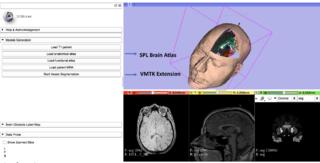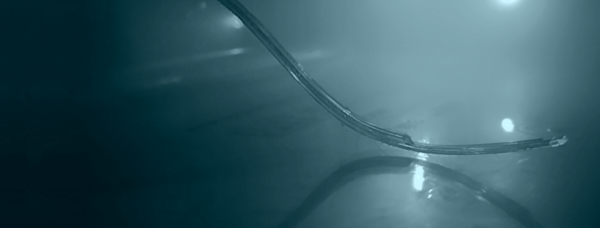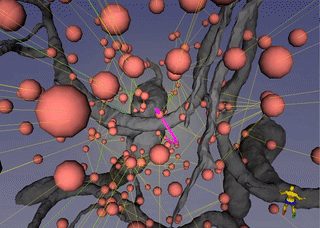Difference between revisions of "Project Week 25/Steerable Catheters Path Planner Extension for Brain Surgery Applications"
m (Fix MediaWiki formatting issue discovered while converting to GitHub Flavored Markdown using pandoc (via https://github.com/outofcontrol/mediawiki-to-gfm)) Tag: 2017 source edit |
|||
| (13 intermediate revisions by 2 users not shown) | |||
| Line 2: | Line 2: | ||
Back to [[Project_Week_25#Projects|Projects List]] | Back to [[Project_Week_25#Projects|Projects List]] | ||
| − | |||
==Key Investigators== | ==Key Investigators== | ||
<!-- Key Investigator bullet points --> | <!-- Key Investigator bullet points --> | ||
| − | *[http://nearlab.polimi.it/medical/albertof/ Alberto Favaro] ( | + | *[http://nearlab.polimi.it/medical/albertof/ Alberto Favaro] (Polytechnic University of Milan, Italy) |
*[http://www.imperial.ac.uk/mechatronics-in-medicine/people/ Marlene Pinzi] (Imperial College, UK) | *[http://www.imperial.ac.uk/mechatronics-in-medicine/people/ Marlene Pinzi] (Imperial College, UK) | ||
| − | |||
| − | |||
==Project Description== | ==Project Description== | ||
| Line 22: | Line 19: | ||
|<!-- Approach and Plan bullet points --> | |<!-- Approach and Plan bullet points --> | ||
The workflow consists in the following steps: | The workflow consists in the following steps: | ||
| − | |||
* Definition of a risk-based distance map based on a multimodal brain imaging | * Definition of a risk-based distance map based on a multimodal brain imaging | ||
| − | |||
* Piecewise-linear path estimation, exploiting the 3D implementation of [1] | * Piecewise-linear path estimation, exploiting the 3D implementation of [1] | ||
| − | |||
* Path interpolation via NURBS curves (a 2D application of the method can be found in [2]) accounting for catheter cinematic and safety constraints | * Path interpolation via NURBS curves (a 2D application of the method can be found in [2]) accounting for catheter cinematic and safety constraints | ||
| − | |||
* Uncertainties map computation, to account for path tracking error during the catheter insertion | * Uncertainties map computation, to account for path tracking error during the catheter insertion | ||
| + | |<!-- Progress and Next steps (fill out at the end of project week), bullet points --> | ||
| + | Goals achieved: | ||
| + | * Deformable image registration via Plastimatch | ||
| + | * Blood vessel segmentation through VMTK | ||
| + | * 3D BIT* path planner implementation | ||
| + | * Path interpolation | ||
| + | * Surgeon eye view | ||
| + | Future steps: | ||
| + | # DTI data integration | ||
| + | # Robust path interpolation considering catheter cinematic constraints | ||
| + | # Uncertainties map | ||
| + | [[File:FavaroPinzi_interface.png|320px]] | ||
| + | [[File:FavaroPinzi_path.mov]] | ||
| − | |||
|} | |} | ||
| Line 37: | Line 42: | ||
==Illustrations== | ==Illustrations== | ||
<!--http://i0.wp.com/www.eden2020.eu/wp-content/uploads/2016/06/2.5mm-catheter-blue-long-2.png?fit=1200%2C456--> | <!--http://i0.wp.com/www.eden2020.eu/wp-content/uploads/2016/06/2.5mm-catheter-blue-long-2.png?fit=1200%2C456--> | ||
| − | [[image:2.5mm-catheter-blue-long-2.png|left|600px|thumb|2.5mm Blue Catheter]] | + | |
| + | {| | ||
| + | | Eden2020 steerable catheter: | ||
| + | |[[image:2.5mm-catheter-blue-long-2.png|left|600px|thumb|2.5mm Blue Catheter]] | ||
| + | |} | ||
| + | |||
| + | ==Video== | ||
| + | Surgeon eye view: | ||
| + | [[File:FavaroPinzi_view.gif]] | ||
==Background and References== | ==Background and References== | ||
| − | The proposed path planning solution finds a possible direct implementation in the | + | The proposed path planning solution finds a possible direct implementation in the [http://www.eden2020.eu EDEN2020 project], a recently founded EU project (GA No. 688279), which aims to develop an innovative system from treating glioblastoma – a highly malignant tumor involving the central nervous system – through a pioneering steerable catheter (see figure above). |
| − | |||
| − | |||
| − | + | #Gammell, Jonathan D., Siddhartha S. Srinivasa, and Timothy D. Barfoot. "Batch informed trees (BIT*): Sampling-based optimal planning via the heuristically guided search of implicit random geometric graphs." Robotics and Automation (ICRA), 2015 IEEE International Conference on. IEEE, 2015 | |
| + | #Jalel, Sawssen, Philippe Marthon, and Atef Hamouda. "A new path generation algorithm based on accurate NURBS curves." International Journal of Advanced Robotic Systems 13.2 (2016): 75. | ||
Latest revision as of 20:37, 11 April 2023
Home < Project Week 25 < Steerable Catheters Path Planner Extension for Brain Surgery Applications
Back to Projects List
Key Investigators
- Alberto Favaro (Polytechnic University of Milan, Italy)
- Marlene Pinzi (Imperial College, UK)
Project Description
| Objective | Approach and Plan | Progress and Next Steps |
|---|---|---|
|
The project consists in a reliable and time-efficient pre-operative path planner for steerable catheters, intended to be used in neurosurgical applications. The algorithm estimates a pathway from an entry to a target point within the 3D space defined by the brain volume in accordance to specific optimality parameters and constraints, as the geometric and kynodynamic characteristics of the catheter, the distance from inner brain structures (e.g. the main blood vessels) and the total path length. |
The workflow consists in the following steps:
|
Goals achieved:
Future steps:
|
Illustrations
| Eden2020 steerable catheter: |
Video
Background and References
The proposed path planning solution finds a possible direct implementation in the EDEN2020 project, a recently founded EU project (GA No. 688279), which aims to develop an innovative system from treating glioblastoma – a highly malignant tumor involving the central nervous system – through a pioneering steerable catheter (see figure above).
- Gammell, Jonathan D., Siddhartha S. Srinivasa, and Timothy D. Barfoot. "Batch informed trees (BIT*): Sampling-based optimal planning via the heuristically guided search of implicit random geometric graphs." Robotics and Automation (ICRA), 2015 IEEE International Conference on. IEEE, 2015
- Jalel, Sawssen, Philippe Marthon, and Atef Hamouda. "A new path generation algorithm based on accurate NURBS curves." International Journal of Advanced Robotic Systems 13.2 (2016): 75.


